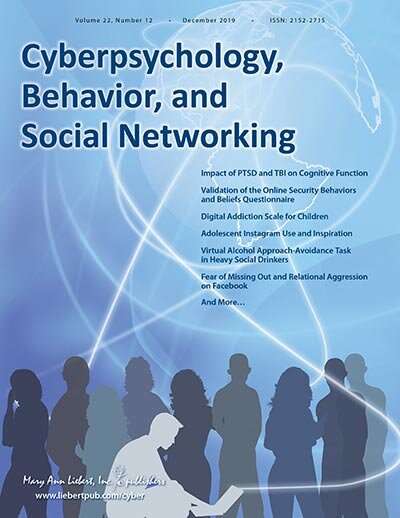Using virtual reality to help individuals with autism spectrum disorder

Novel interventions using virtual reality to aid individuals with autism spectrum disorder (ASD) handle common scenarios may include helping youngsters navigate air travel. This example and more are included in a Special Issue on Virtual Reality Interventions for Autism Spectrum Disorder published in Cyberpsychology, Behavior, and Social Networking.
The article "Virtual Reality Air Travel Training with Children on the Autism Spectrum: A Preliminary Report" was coauthored by Ian Miller, Brenda Wiederhold, Ph.D., Catherine Miller, and Mark Wiederhold, MD, Ph.D., Interactive Media Institute (San Diego, CA), Virtual Reality Medical Center (La Jolla, CA), and Speech Tree Therapy Center (Chula Vista, CA). The researchers used an iPhone and Google Cardboard device to deliver the virtual reality intervention once a week for 3 weeks to each child with ASD. At week 4, the children went to the airport for a real-world air travel experience. Both the parents and researchers observed improvement in the children's air travel skills after the intervention and all of the children were able to navigate the real-world airport under their own power.
Gregory Kuper, Kate Ksobiech, Ph.D., Jonathan Wickert, Ph.D., Frederick Leighton, and Edward Frederick, Ph.D. coauthored the article entitled "An Exploratory Analysis of Increasing Self-Efficacy of Adults with Autism Spectrum Disorder Through the Use of Multimedia Training Stimuli." The researchers found significant increases in the participating adults' self-efficacy when a multimedia training approach was used—in this case, video and virtual reality—to teach them a vocational skill.
The article entitled "An Auti-Sim Intervention: The Role of Perspective Taking in Combating Public Stigma with Virtual Simulations" describes a study in which a virtual reality tool is intended to reduce the stigma associated with ASD and sensory overload symptoms. Coauthors Melanie Sarge, Ph.D., Hark-Shin Kim, Ph.D., and John Velez, Ph.D., from Indiana University (Bloomington) and Utah Valley University (Orem) exposed a group of college students to a virtual simulation called Auti-Sim, which is intended to simulate the sensory overload of ASD. Compared to students not exposed to Auti-Sim, those that engaged with the virtual simulation showed greater perspective taking, resulting in greater emotional concern, helping intentions, and willingness to volunteer.
"From education and training to treatment and assimilation, VR technologies are assisting across a range of experiences to help us better serve those with ASD. With the increasing focus on integrating a neurodiverse population into today's workforce, these new tools can assist us in achieving our inclusionary goals," says Editor-in-Chief Brenda K. Wiederhold, Ph.D., MBA, BCB, BCN, Interactive Media Institute, San Diego, California and Virtual Reality Medical Institute, Brussels, Belgium.



















